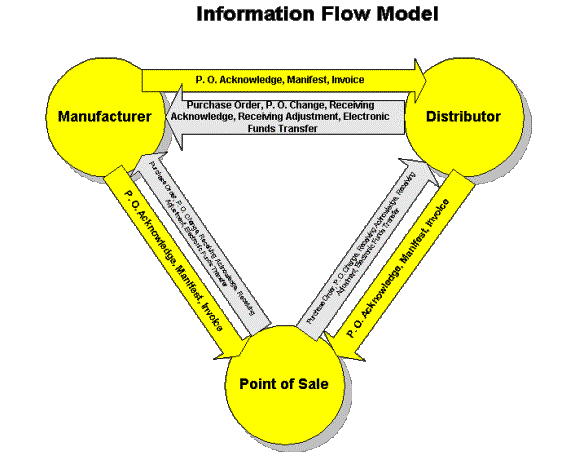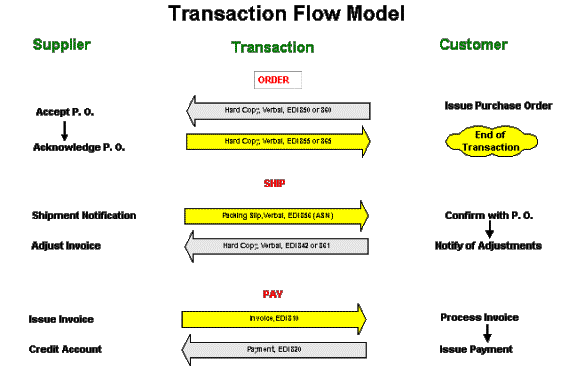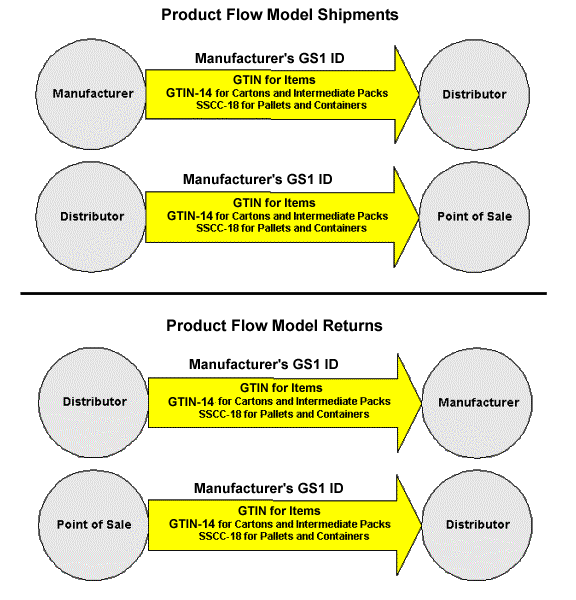|
IBCA
Supply Chain Foundation Guide (SCF)
Introduction
If you have studied supply chains for more
than a few years or even if you are a newcomer to the profession, you will
observe an apparent dichotomy. Simply
put, to drive down carrying costs you want to reduce inventory levels.
However, if you want to make a profit you want to sell more product.
More sales with lower stock levels will mean more orders.
Therein lies the conflict; reduce costs by lowering inventory levels but
increase costs because of procurement and handling.
Something has got to give and it has to be the
cost to place an order, receive the goods, invoice and pay bills.
This is why a company must understand all the pieces of the puzzle and
why all the pieces must work together. The front office activities (purchasing
and accounting) at once cause and are caused by procurement, sales, logistics
and material handling. And all costs must be reduced.
The technologies that can drive down those
costs include bar code and electronic commerce (EC), especially the electronic
data interchange (EDI) portion of EC. Fundamentally,
these technologies are forms of communication -- and communication requires
standards.
This guide has been prepared for
manufacturers, packagers and distributors of products provided through the IBCA Supply Chain. The recommendations
made are intended to provide a common method for communicating critical
information throughout this distribution channel.
This includes manufacturing, distribution and retail sales.
Today’s retailers are demanding that their
trading partners provide product distribution information that is timely,
complete and in conformance with industry data/information communications
standards. This demand translates
into both opportunity and responsibility for implementing the technologies and
techniques outlined in this guide. There
are three specific areas addressed in this document, they are: Standard Forms,
Bar Codes and Electronic Commerce (Electronic Data Interchange, EDI).
Your company’s data processing budget,
commitment to implementing industry standards and current level of
implementation will determine which sections of this document you should focus
upon. Minimum requirements for all
distributors requires source marking of items and shipments with bar codes as
explained in Chapter 4. We recommend that you review the entire document so you are
familiar with its content. Then,
depending upon your level of involvement, you can go to a greater level of
detail as appropriate.
- The rest of
the Introduction provides an overview of standard business
communications requirements. The Information
Flow Model presents the information channel,
manufacturer-distributor-retailer, and the types of information utilities needed
for commerce within this channel. The
Transaction
Flow Model provides an overview of the primary types of transactions
conducted to exchange the necessary information. The Product
Flow Model shows the flow of product within the channel and identifies
the bar coding requirements for movement of product.
- Chapter
2 provides an overview that
explains the benefits and business case for using bar code and standard product
numbers.
- Chapter
3 tells companies who manufacture
or label products for sale in the IBCA Supply Chain how to organize the labeling
project.
- Chapter
4 explains the GS1 method of
product identification and bar code use.
- Chapter
5 provides a step-by-step project
to apply GTIN bar codes to all the products a company produces or packages.
- Chapter
6 deals with the label that is
placed on a shipping container. The
bar code on this label is the serial number that provides unique identification
of a box. That box may represent
the entire shipment or just a portion of a shipment.
The unique number is the link to EDI transactions.
- Chapter
7 contains information about the
print quality of bar codes. It is
extremely important because if the bar codes are difficult for the scanning
equipment to read, then the viability of the entire concept is at risk.
- The
appendix is
provided to answer questions about how bar codes work.
Below is shown the
most common transaction types with
widespread application for manufacturers,
and distributors of IBCA products. The Information Flow Model describes the communications vehicle used, by
supply chain partners, to communicate commerce information.

The
Transaction Flow Model below
describes the primary transactions and the most common methods of communicating
the information necessary to complete them. The numbers i.e. 850, 860, etc.
refer to the transaction set designators found in the ANSI X.12 specification

The
Product Flow Model identifies
the key, bar coded, data elements that are to be carried on containers moving
within the defined supply channels.

This
is a checklist to be used when conducting a Compliance Labeling Audit
1. Can you send the right data to
the label generation software?
-
Do
you know how many different label formats are required?
-
Do
you know what data needs to be sent for each different label format?
-
For
each label do you know what data will be:
-
keyboard
entered?
-
automatically
generated by the computer?
-
retrieved
from data bases?
-
entered
from digital scales of other ASCII devices?
-
bar
code entered?
-
Do
you have a GTIN-assigned Company Prefix?
-
Are
your item part numbers (Item Reference) and GTIN numbers assigned?
2. Can you create the formatted
labels, in the necessary quantities, that meet customer quality specifications?
-
Do
you know what the bar code and label quality requirements are?
-
Do
you know how many labels of each format are needed?
-
For
direct printing, do you have film masters?
-
For
labels and hang tags, do you have label generation software?
-
Do
you have printers capable of meeting the requirements?
-
Are
label formats created?
-
Do
you have label stock?
3. Can you apply the labels
properly?
-
Do
you know where on the packaging to apply the labels?
-
Do
you need procedures and written instructions explaining where labels should be
placed?
-
Have
you trained your employees to apply them properly?
-
Do
you need automatic label applicators?
4. Can you assign
unique numbers
(Global Trade Item Numbers – GTINs) to new products?
5. Can you notify your customers
of your number assignments?
6. Can you cross reference your
old numbers to the new GTIN numbers?
7. Can you troubleshoot the
system?
8. Do you have a contingency plan
if your primary printing system breaks?
9. Do your customers accept your
labels/symbols?
BACK TO TOP
NEXT >>
|